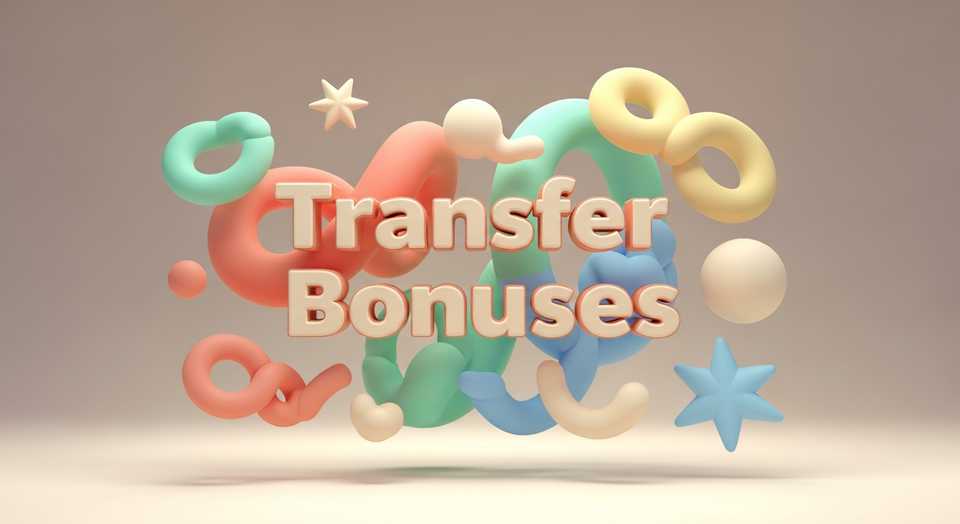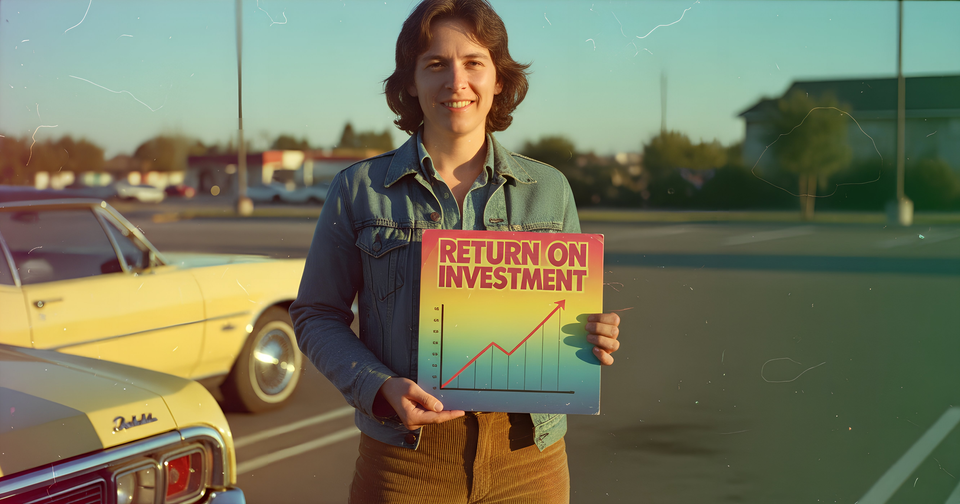The Points Don’t Care How You Feel. They Care What You Do.
Most businesses waste thousands by using points emotionally. Stop relying on brand loyalty or convenience. Use the right cards by category, target 1.5¢+ redemptions, and let data drive decisions. Points don’t care how you feel—they care what you do. Treat them like a business asset.


If You Only Had 60 Seconds to Read This Article (Click Here)
Most business owners leave tens of thousands in value on the table by managing points and miles emotionally—favoring brand loyalty, convenience, or simplicity over strategy. If you're spending $30K+ per month, that mindset is costing you real money. The best results come from treating points like a machine: input, output, return. One-size-fits-all cards, especially those earning just 1x on most purchases, severely limit your upside.
An optimized system assigns the best card to each spending category, uses flexible currencies like Chase and Amex, and targets redemptions worth at least 1.5¢ per point. Automating tracking, reverse-engineering big travel goals, and planning redemptions by value—not convenience—can multiply your return 3x or more. This isn’t complex with the right setup; it’s strategic.
If a card feels “easy,” it’s probably underperforming. Stop being loyal to the wrong programs. Build a transfer-friendly portfolio, track your numbers, and let data—not emotion—drive your decisions. The points don’t care how you feel. They care what you do. Start doing it better.
Everything else you need to know is just below 👇🏻
Points and miles can be your most powerful business tool—or a massive waste of potential.
Some treat them like a hobby. Some see them as a side perk. But if you're a business owner spending tens of thousands per month, you need to see them for what they really are: a high-leverage financial machine. A machine that responds only to inputs and outputs.
It doesn’t care if you “love Delta.”
It doesn’t care that you “just use one card for everything.”
It doesn’t care that you’re busy or that this feels overwhelming.
If you’re operating in the emotional lane—leaning on brand loyalty, convenience, or fear of complexity—you’re leaving real money behind.
It’s time to fix that.
Why Most Businesses Lose Thousands on Points
Let’s say your company spends $30,000 a month. Maybe you put everything on your Amex Gold, because you like the customer service or trust the brand.
But here’s what’s really happening:
- Amex Gold earns 4x on restaurants but only 1x on most other categories.
- That means you’re earning weak returns on the majority of your spending.
- $360,000 per year in spend could be generating $20,000+ in free travel.
- But if you’re using an inefficient setup, you might only be getting $5,000.
After we optimized their system, they hit a 6.2% return. That’s $22,320 in value—nearly $2,000/month—just by changing how the machine was fed.
Emotions That Kill Points Efficiency
Let’s break down the most common emotional blocks that cost business owners tens of thousands of dollars every year.
Fear of Complexity
“It’s just too complicated.”
That’s understandable—if you’re trying to DIY your way through dozens of cards, redemptions, transfer partners, and tracking tools without a clear system. Chaos guarantees confusion.
But with a strategy in place, complexity disappears.
You categorize your spend. You assign the right card to the right job. You automate tracking. You pre-plan redemptions. That’s not complexity. That’s control.
The Convenience Trap
Using one card for everything feels easy. It also feels safe. But it’s functionally the same as going to the gym and only doing curls. You’re skipping all the compound lifts that actually build strength.
One-size-fits-all doesn’t work in finance, and it doesn’t work in points.
By failing to diversify, you ignore categories where you could be earning 2x, 3x, or 5x instead of just 1x. That adds up fast over six or seven figures in annual spend.
Misguided Brand Loyalty
“I just love United.”
“I’m loyal to Delta.”
“I always fly American.”
Cool. But ask yourself—what are you getting in return for that loyalty?
Most airlines love your loyalty because it makes you easy to retain. But unless they’re providing consistent upgrades, outsized redemptions, and elite perks that truly justify the spend, they’re not loyal to you. They’re loyal to your revenue.
What Rational Point Users Do Differently
There’s no magic trick here. It’s simply about logic, data, and intention.
Here’s how optimized businesses treat points:
They Use Flexible Currencies
The most valuable points aren’t tied to a single airline or hotel chain. Chase Ultimate Rewards, Amex Membership Rewards, Capital One Miles, and Citi ThankYou Points offer transfer options that unlock premium cabins, luxury stays, and huge redemption multipliers.
With flexible currencies, you’re never boxed in. You can move based on value—not loyalty.
They Diversify Cards by Spend Category
The best systems assign the best card to each spend category:
- Advertising – 3x to 4x options exist.
- Software and subscriptions – Some cards offer 3x.
- Travel – Go for 3x to 5x.
- Restaurants and dining – Easy 4x or higher with the right cards.
- Shipping, utilities, inventory – All can be optimized.
Building a System That Works Like a Machine
Now let’s get practical. Here’s how to build a high-performing points strategy that runs without emotion—and without requiring your daily attention.
Step 1: Set a Minimum Redemption Value
Not all redemptions are created equal. The real question isn’t “how many points do I have?” It’s “how much value can I extract from these points?”
A point should be worth at least 1.5¢ to justify spending it. Anything below that, and you’re better off earning more or saving them for better redemptions.
Step 2: Automate Tracking
Manual tracking is tedious. But automation changes the game.
Use tools that monitor your effective return, calculate redemption values, and ensure your card usage stays optimized. Even a simple spreadsheet is better than flying blind. A tool like UpTop can do the heavy lifting at scale.
Step 3: Pre-Plan Big Redemptions
The best redemptions are rarely spontaneous. Want to fly Emirates First? Take the team to Mykonos? Score a luxury safari?
You need to reverse-engineer those goals:
- How many points does it take?
- Which currencies transfer to the right partners?
- What’s the best card to accumulate them?
Then align your spending accordingly.
The Power of Transfer-Friendly Portfolios
If you’re earning only cash back, you’re capping your upside. Cash-back cards are simple, sure—but for businesses spending $20,000 or more per month, they’re rarely the best strategy.
The true power lies in transfer partners.
- Chase points can become Singapore Airlines business class tickets.
- Amex points can turn into ANA first-class round trips.
- Capital One and Citi unlock boutique hotel deals or rare international routes.
If you’re serious about extracting value, these are the currencies that matter.
Final Boarding Call
Points and miles aren’t emotional. They don’t care that you’re “loyal.” They don’t care that you’re “comfortable.” They respond only to the math.
So let’s recap:
- If a card feels easy, it’s probably under-earning.
- Loyalty should be earned—not given.
- Track your returns. Know your numbers.
- Set a floor on redemptions.
- Build a diversified, category-optimized card stack.
- Let flexible currencies and transfer partners do the heavy lifting.
- Plan redemptions ahead and assign spending intentionally.
Treat points like a vibe, and you’ll get vibe-sized results.
But treat them like a business asset—like a machine—and they’ll repay you with upgrades, luxury stays, and tens of thousands in tax-free travel value.
The points don’t care how you feel.
They care what you do.
It’s time to do it better.




